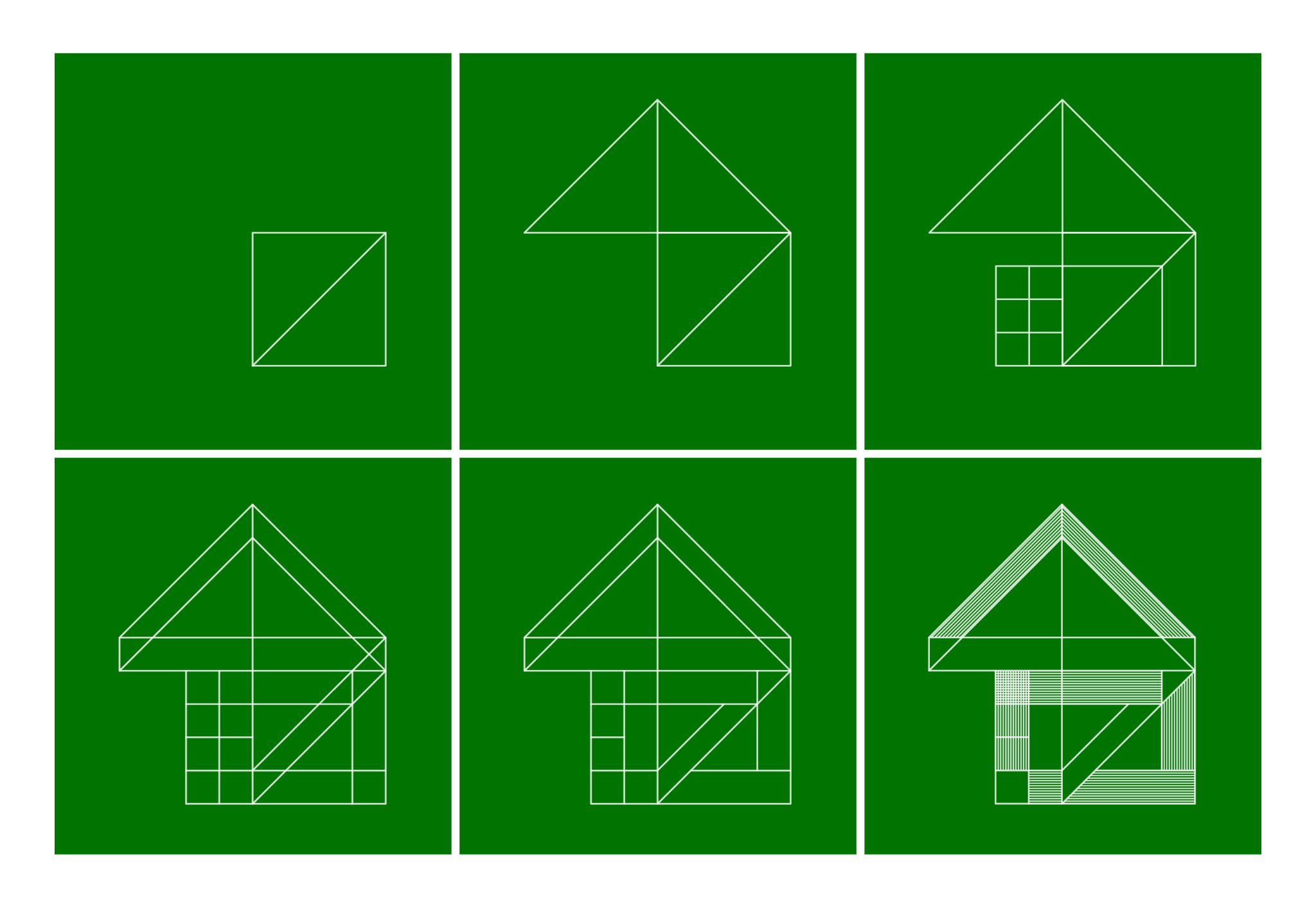Al-Khwārizmī’s algorithmic methods departed from Greek geometry and its idealized harmonics by working in a verbal custom. His mathematical writing, developed before the widespread adaptation of symbolic code, is succinct, lucid, and notably modern. This linguistic model broke complex problems into discrete steps. For the contemporary programmer, Al-Khwārizmī’s well-defined and implementable instructions read like pseudocode, an artificial and informal language that helps programmers develop complex algorithms and software.
Pseudocodes can take many forms to solve complex problems, so long as each step is discrete and executable. In other words, pseudocode must be computable. Conceptual artist Sol Lewitt’s wall drawing instructions, for example, are a form of pseudocode. While no two wall drawing installations are precisely identical, the
rigor of his instructions assures fidelity in each “version” of a particular wall painting while also leaving suitable space for chance and happenstance arising from particularities of context, materials, and labor practices. Al-Khwārizmī viewed roots and squares as if they are objects in their own right to break complex systems into discrete and executable steps. This systematic of logic combining geometric intuition with arithmetic precision, was the birth of the algorithm.
In the summer of 2021, I worked with Ashley Bingham and Erik Herrman (Outpost Office) to draft a series of field drawings based on Al-Kwarizmi’s work ca. 800 CE. Together with Outpost Office and Turf Tank’s GPS-guided robot, the machine typically used to stripe sports fields, we created a series of large-scale temporary field drawings.
Drone photography by Erik Herrman
Excerpt from “Dixit Algorizmi - The Garden of Knowledge” for the Uzbekistan National Pavilion at La Biennale di Venezia by Outpost Office and Zach Schumacher
[ Home ]
Spake Scapes w/ Outpost Office



